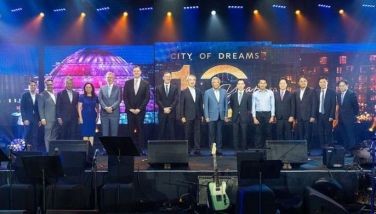Our flawed heroes, and their shining hour

I am sorry I missed Repertory Philippines’ musical, Miong, which is based on the life of Emilio Aguinaldo. It was one more effort to refurbish Aguinaldo’s name. Whatever his failings, Aguinaldo’s exalted position in our history is secure. But like all men, our heroes have flaws that are diminished or banished altogether in their shining hour.
I met the old soldier in the 1950s when I was in my twenties and writing for the old Manila Times Sunday Magazine. I was also working on my novel, Po-on, which is set in 1872, the year the three Filipino priests, Gomez, Burgos, and Zamora, were executed by the Spaniards for their so-called participation in the Cavite mutiny of that year. Some Filipino historians mark this year as the genesis of a conscious Filipino nationalism.
Emilio Aguinaldo was in his eighties then. His eyes were watery. He had a very gentle manner and was soft-spoken. I wanted to ask him several sensitive questions about General Luna and Andres Bonifacio, and the Pact of Biak-Na-Bato. He intimidated me. Here I was, a fledgling writer, and this venerable historical figure always addressed me in very polite Tagalog.
But I did get a lot of information when he started reminiscing about the Malolos Republic and the flight of the defeated Filipino army and government from its last sanctuary in Tarlac, through Bayambang in Pangasinan, then all the way to Tirad Pass across the Cordilleras, the Cagayan Valley, and the Sierra Madre, to Palanan on the Pacific coast. I was going to ask him about the death of Bonifacio. But I think he had anticipated my question because he said, “In a revolution, there must be only one leader.”
I’ve read Mabini’s scathing criticism of Aguinaldo and how eventually Mabini was eased out of the Malolos government at the influence of the Federalistas – Paterno, the Legardas, the Aranetas, the Buencaminos. They were in Malolos in the daytime but at American-occupied Manila at nighttime, negotiating with the Americans to make the Philippines a member of the American Union.
Mabini, Antonio Luna, Bishop Aglipay – they all knew that the young Republic, with its ill-equipped army, was no match for the Americans who were better armed and supplied. Bishop Aglipay and General Luna went North to reconnoiter the escape route of Aguinaldo and his ragtag army. Their purpose was to mount a guerrilla war against the Americans from bases in the Cordilleras, where they could get support from the Ilocos region and Cagayan Valley.
There are three routes to the Cagayan Valley from the Central Plain of Luzon; the first is Sta. Fe Trail, now Dalton Pass, which is wide enough to permit bull carts, water buffalos, and horses. The Villa Verde trail across the Caraballo range in Pangasinan can only be crossed on foot. Then there is Bessang Pass from Taguddin, Ilocos Sur, and finally Tirad Pass from Candon, Ilocos Sur. If you are in Candon, on a clear day you can recognize Mt. Tirad. Tirad in Ilocano means pointed.
The Americans, however, were well-informed on the movements of the Malolos government. They landed a force in San Fabian, La Union, which then marched across Pangasinan and Nueva Ecija, and sealed the Sta. Fe Trail. Aguinaldo had no other way except Tirad. The Americans had a cavalry, only a few hours behind a fleeing Aguinaldo and his troops. Aguinaldo had already crossed Tirad when Del Pilar turned back to delay the Americans who were closing in. The rest is history.
What we must remember always is that, in the end, we are our own worst enemy. After that grueling flight across two mountain ranges, Aguinaldo reached Palanan on the Pacific coast only to be betrayed by the Macabebes and captured by the Americans.
In recalling the retreat of Aguinaldo to Palanan, I’m reminded of another classic retreat in ancient history, that of Xenophon, the Greek student of Socrates who went to Persia with 10,000 Greek mercenaries at the bidding of Cyrus, the younger brother of the Persian king who wanted to usurp the throne. Cyrus was killed and the Greeks were demoralized, until Xenophon spoke to them, then led them back across great distances, hostile tribes, from desert to sea, and finally Greece.
Aguinaldo’s retreat is not equivalent to that of Xenophon and the Greek mercenary army, but it is one heroic story of how Filipinos endure and surmount adversity. An aide of General Aguinaldo, Colonel Villa, the father of the poet Jose Garcia Villa, describes that epic flight in his journal. He notes that the big towns in Central Pangasinan were still surrounded by jungle, that some of the people in their escape route were hostile.
The flaws of our heroes are described in that great book, “A Question of Heroes,” by Nick Joaquin. Character is fate. Aguinaldo was an opportunist, Gregorio del Pilar was a womanizer, and Rizal was a narcissist. But all had their shining hour, which anointed them with greatness – Rizal calmly standing before the Spanish firing squad that December morning, Aguinaldo hoisting the flag of Asia’s first Republic in Kawit, Cavite, on, and Gregorio del Pilar in the Battle of Tirad Pass, heroically trying to stop the flood.
These flawed Filipinos shaped our history, acting out their faults and transcending them in concert with their concept of nation. We must remember so we can compare them with our leaders today and those who are campaigning for public office in May. Did these leaders a hundred years ago plunder this nation?
The flaws of Duterte are so blatant to all of us. But he may yet have his shining moment when he mounts that jet ski and, defying the Chinese Navy, he plants the Philippine flag on our Panatag Shoal.
- Latest
- Trending
























